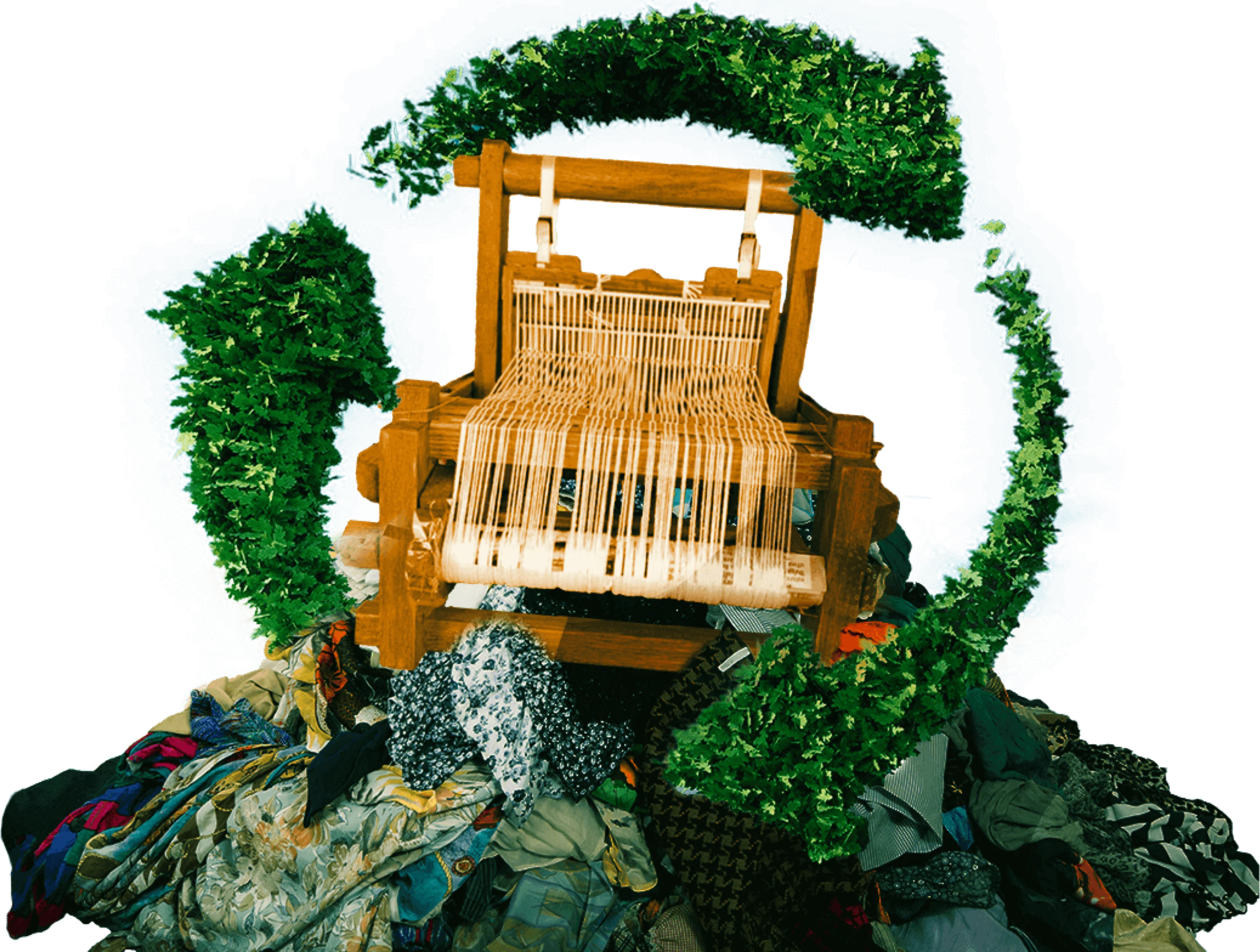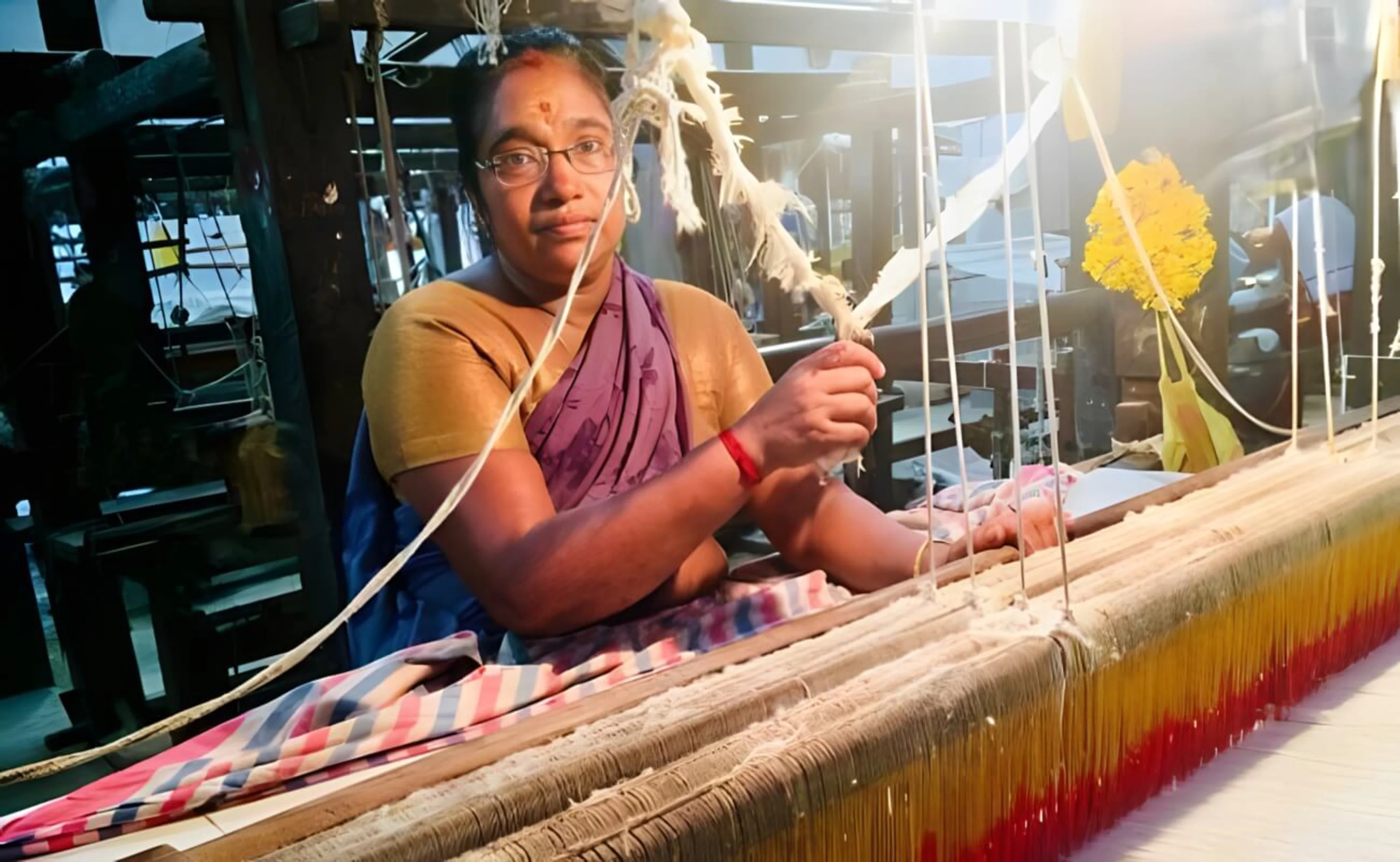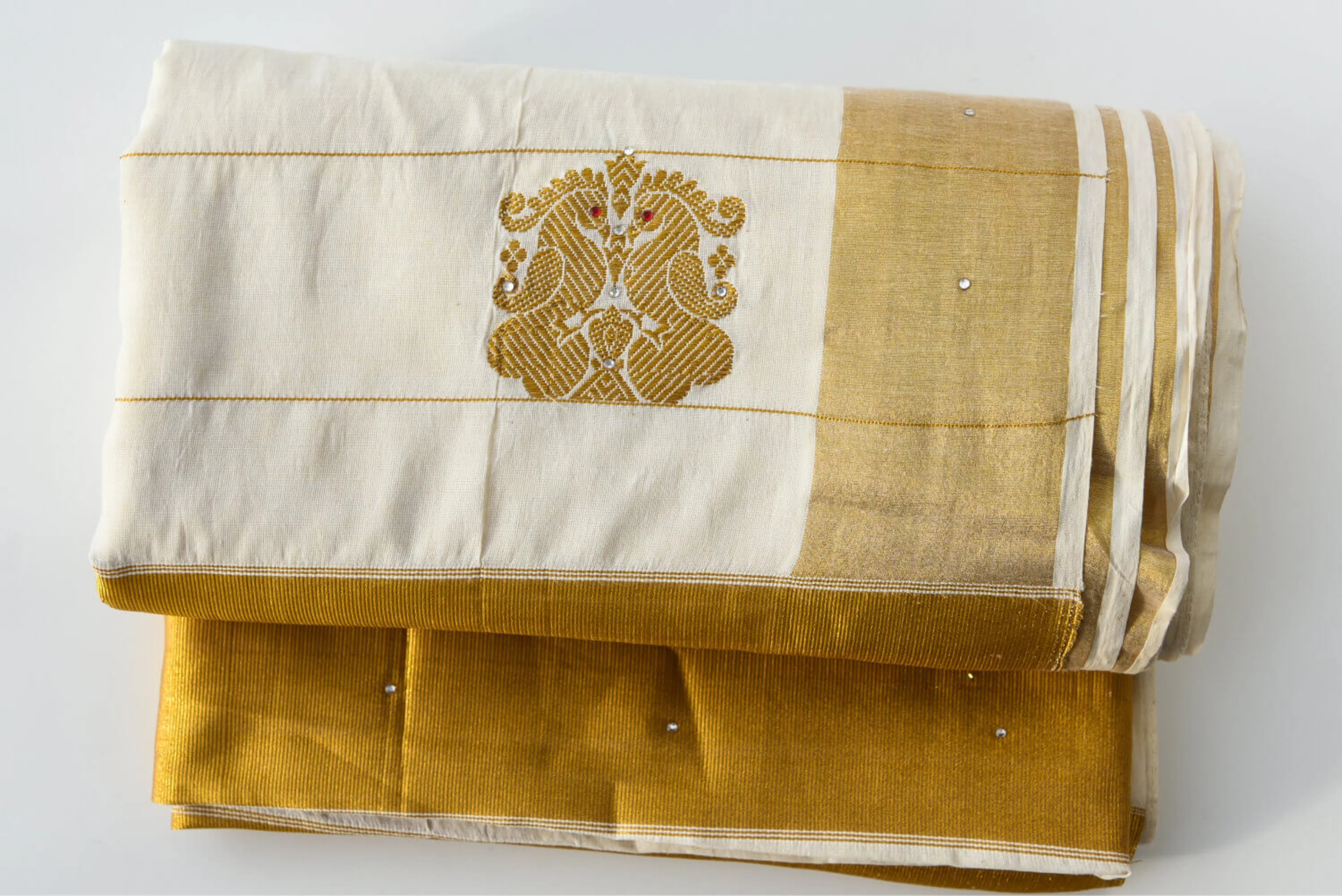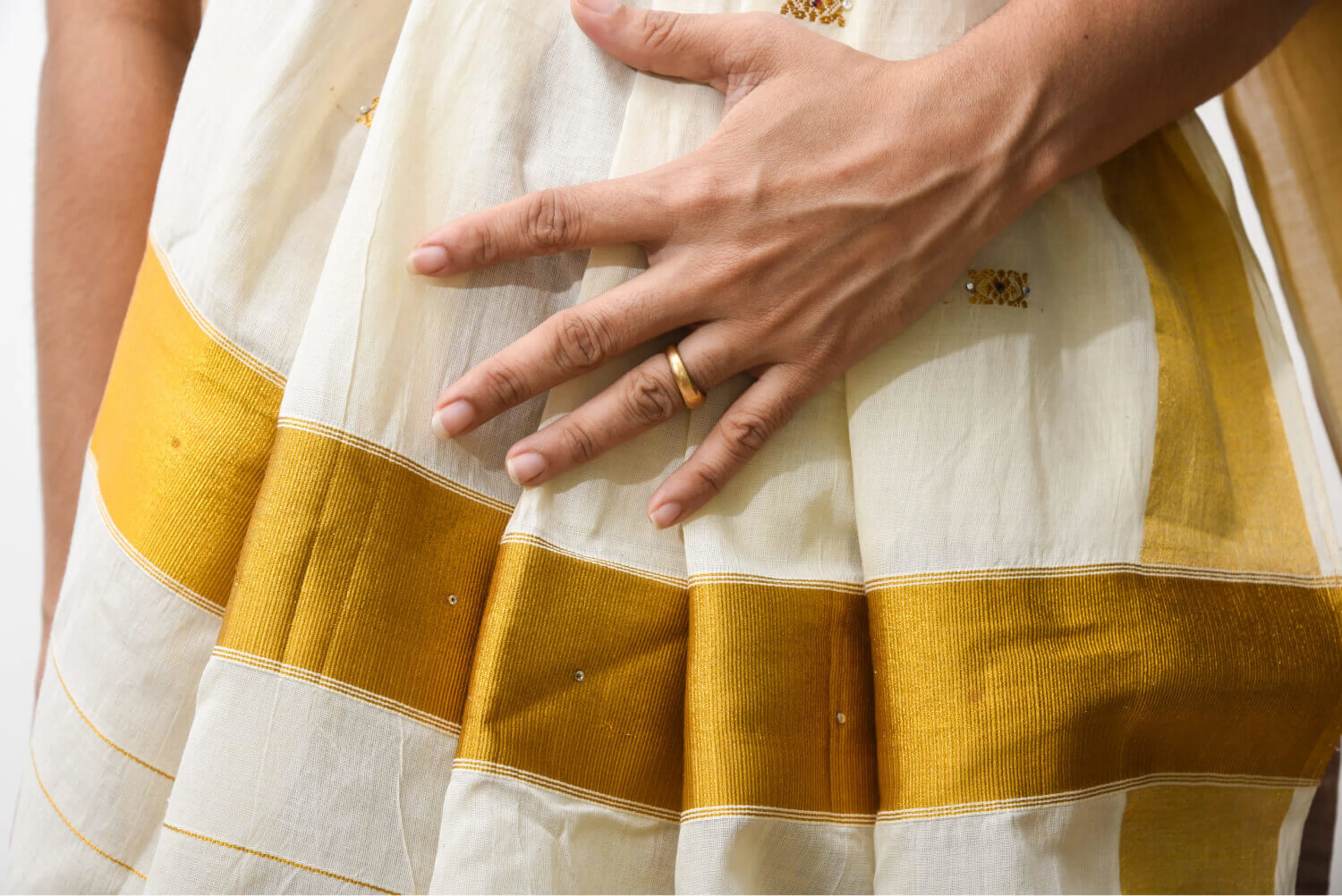Can the Handloom Industry Fight Back Against Fast Fashion?
11 May 2023

11 May 2023

We are picky about our clothes. At least some of us are. Be it formal or casual, people like to look their best apart from a few who are too lazy to dress up.
We peruse through the clothing racks, checking the size, the silhouette, the colour, and whether it suits the occasion it is required for but, how often do we think about the technology behind its production or the effort of the people involved? Almost never.
During the production of your clothes, the yarn undergoes a series of processes like shedding, picking and battening on a power loom. Operated by mechanical or electrical power, the power loom is what enables the fashion industry to properly function in a fast-paced environment to satisfy the ever-changing desires of the consumers.
Today, as fast fashion resides well in the public’s list of favourites on account of its accessibility and affordability favoured by millions of middle-income families around the world, a minor industry which was once the backbone of the fashion world has now been reduced to its skin and bones: The handloom industry.
The business that employed manual labour for fabric production was one of the most successful in the world until of course, the industrial revolution changed its course in the 19th century. To sum up the past, the power loom thrived because of its ability for rapid mass production and the handloom employees subsequently lost their livelihoods. The weavers and spinners were forced to take a step back and succumb to the ill effects of poverty in the aftermath of the machines’ success.
A part of the handloom industry, however, refused to back down. Even with its lost glory, the industry has continued to function, though the number of units has reduced drastically. Today, this activity exists only in a few nations, in developing ones such as India, Bangladesh and Sri Lanka where it is a major means of income for rural livelihood. Nevertheless, the industry has neared its end as a consequence of inadequate funds and demand.
I wanted to explore the issue deeper, so I dug out some books, read the literature, and finally set out on a two-week journey to South India to study the problems in depth.
I visited two handloom villages in the state of Kerala where I received a warm welcome from over twenty weavers, most of them being female and over the age of fifty with no affiliation to modern technology. It was surprising to learn that some of them have not even seen a computer in their lifetime.

As I began to observe the art up close, the physical stress endured by the weavers from having to work in the same position from 9-to-5 became more visible. With their hands on the two handles and the legs on the paddle, the consistent to-and-fro movement of the loom has led them to have various body problems. It was saddening to hear that this was their primary takeaway from the job. If backache, arm and leg pain weren't enough, it had to be piled up with internal body issues such as asthma caused by the dust of the loom. I could see some of the weavers, particularly the elders struggling to keep up their continuous pace of movement.
This was just the tip of the iceberg. What followed was a long conversation that cemented the stereotypical image of those in power accountable for the welfare of these minority groups.
“People with families cannot survive on this. We are earning a livelihood and at the same time must ask others for money. I am receiving the wage weekly but for other expenses such as school uniform and travel, I must depend on other family members”
A weaver said, her words reflected the same angst and helplessness on her face.
Even with such hard labour, they are paid about 900 rupees per week. Roughly, that’s 9 pounds. Imagine working to your bones all week only to be faced with the disappointing economic reality. In the UK alone, people spend on average about 20 pounds per week on clothing. Thanks to fast fashion, global consumer spending on clothing has now exceeded two trillion dollars and is predicted to rise even further. It’s all well and good to have cheap clothes, but there are traditions and livelihoods that are being lost in real time because of the fast-fashion industry.
What’s even more depressing is that there is no consistency in the wages they receive. The government pays as and when they prefer. According to the Ministry of Textiles, 2000 million rupees have been allotted for handloom development and yet ‘the poor get poorer’. Almost 100,000 rupees is owed by the government to each weaver and they have already given up any hope of ever receiving it.
By mere logic, it can be deduced that the materialistic desires of the so-called guardians who have taken an oath to protect the needy serve as the reason behind their state of peril. Corruption in these organisations is an already established fact that I was also able to hear directly from one of the secretaries of the handloom cooperative societies.
This combined with the piling financial debts is what drives the weavers to the worst scenario. Many weavers take their own lives instead of suffering the financial shackles imposed on them by the state. Spending 30,000 million rupees on the world’s tallest statue and not a penny to save those 1500 lives over three years cannot exactly be termed economic growth.
My experience in the village hit me deep with the realisation that regardless of how progressive the nation is, there will always be a part of the society bound to suffer, weighed down by the outcome of corporate greed and incompetent decisions by the political and bureaucratic authorities.
It doesn’t end here. Next to the government, it is the private shops and companies benefitting at the expense of the handloom industry’s reputation by selling counterfeit products to those who cannot differentiate between the both. If sweatshops, pollution and animal cruelty weren’t performing a good enough job of defamation, these downtrodden tactics would definitely have the fashion industry wearing the cone of shame.
I consider myself lucky enough to witness the result of the handlooming community’s hard labour – an exquisite piece of fabric that lies far ahead in terms of quality and craftsmanship that it is almost impossible to be beaten by any fast-fashion item at any given time. It is not that the Handloom cannot succeed, rather a lack of funds, a lack of strong marketing tactics, and a lack of technology keep pushing the industry to its doomsday.


It is not going to be easy but this industry can be revived with the collective effort of the government and the public. As it is handmade, the products are expensive but they can be made more affordable if the government cuts down the cost of raw materials and guarantees a minimum wage for the weavers to attract more people to work, especially those living below the poverty line.
It may seem impractical to revert to old ways of manufacturing, and it is indeed, but remember how staying indoors during the pandemic reduced greenhouse gasses drastically? The Handloom sector can do the same to the fashion industry if it is allowed to carry out at least one-fifth of the global fabric production and this can relieve the fashion industry from being the second largest polluting industry in the world.
Handloom brands have such a low presence on digital media that it is very easy to miss them. Appealing to the demographics of millennials and Gen Z is the key if the sector wants to get back on its two feet, for which it is highly essential to embrace social media. Inviting their participation and promoting them with innovative content can highly improve the fanbase of these products.
All of these suggestions would be futile if the governments intend to keep ignoring the situation. Justice delayed is justice denied, which seems to be apt for this situation. The weavers can leave this profession and find a job elsewhere, but they refuse to do so, as handloom is not just a livelihood. It is a means to reflect their own traditions and culture, a bridge to connect with their celebrated past, a medium to relish the values associated and the beauty of a job well done. If you have handmade any object, you would be familiar with the priceless gratification you receive after the successful creation of a product. It is the same for them and they are determined to protect it at any cost. The least we can do is lend a hand and support them now as we will never fully realise the issue until it is our own culture that is threatened.
Written by
Minu Maria GeorgeA fashion graduate whose interests lies in not just the scope of emerging fashion, but numerous other subjects varying from social disparities to pop culture.
Read next
Are we wasting our time with climate activism?

Eve Gardiner
Freezing your eggs is not an insurance policy for children

Safia Yallaoui
I'm British. India is a better country than the U.K.

Connor McIntyre
Weekly emails
Get more from Minu
The Fledger was born out of a deep-seated belief in the power of young voices. Get relevant views on topics you care about direct to your inbox each week.
Write at The Fledger
Disagree with Minu?
Have an article in mind? The Fledger is open to voices from all backgrounds. Get in touch and give your words flight.
Write the Contrast